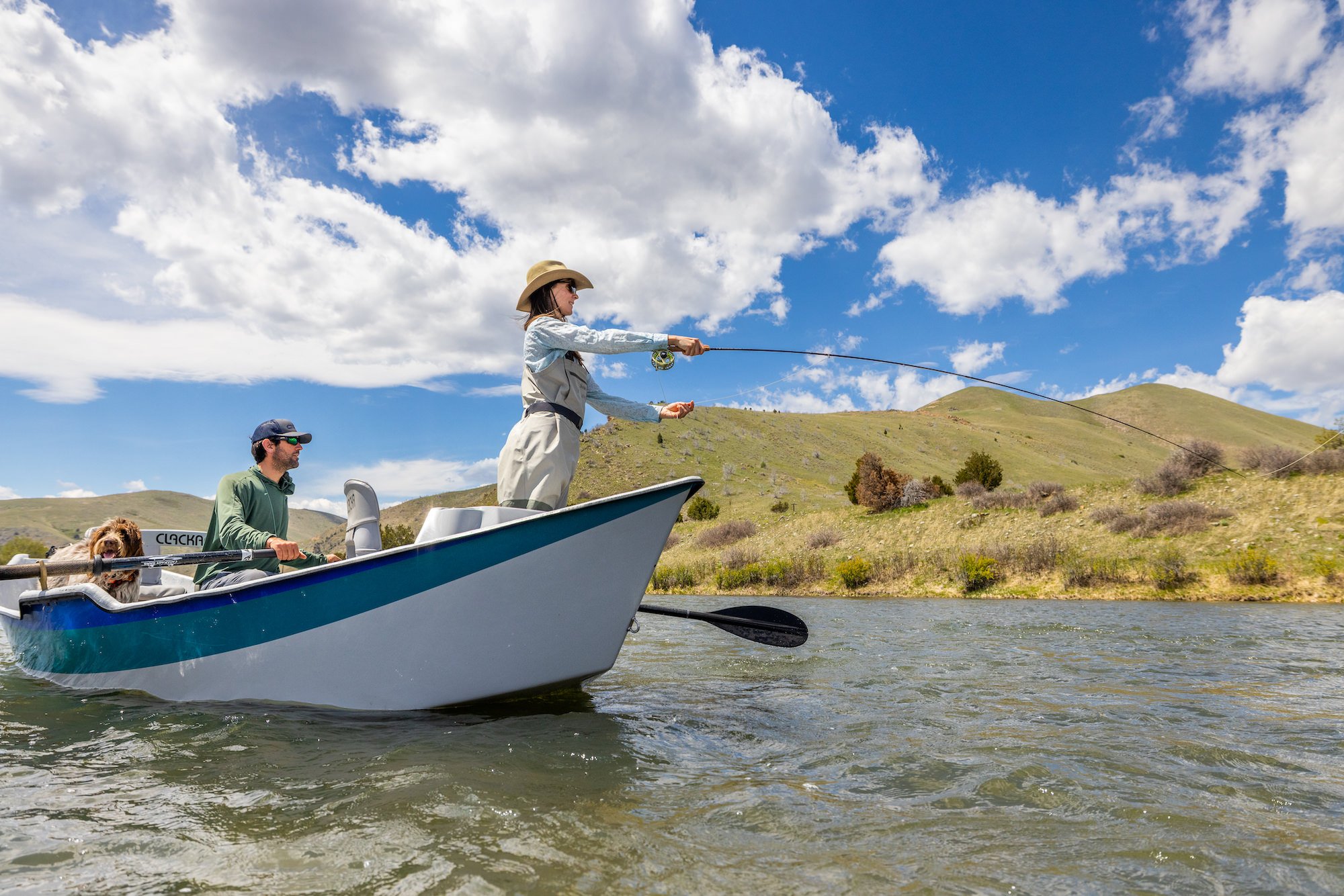Float the Madison River: A Complete Guide
Summer wouldn’t be summer without time spent floating on the Madison River. Beginning in Yellowstone National Park and meandering its way to the Missouri River, the Madison has diverse stretches of water. From exciting rapids just below Ennis Lake to remote sections with gentle currents, relaxing on one of Montana’s favorite rivers is a lovely pastime.
There are several options to float the Madison River, ranging from a guided raft or tube trip to making a day of it on your own. We’ve got the skinny on all the options — you can decide which is best for you!
Visiting Bozeman this summer? Subscribe to our blog to get travel ideas delivered to your inbox.
Leisurely Float on the Madison River
The most popular and accessible float begins at the Warm Springs Access with takeout at Black’s Ford (also known as the bikini float). It's about a half-hour, scenic drive from Bozeman on a two-line, windy road. The road is often busy in the summer, so don't play on being in a hurry.
If you’re looking for tubes, you can generally find them at the local tire shops, hardware stores, or big box stores. You’ll need two cars to shuttle back and forth. Otherwise, it’s a long walk, and hitchhiking along this stretch isn't easy.
If you prefer a hassle-free float on the Madison River, Montana Whitewater offers two tube trip opinions:
- They can meet you at the access point with all the gear provided. At the end of your float, they'll pick up the gear.
- Book a private tube trip with a guide and shuttle to and from the river from Bozeman. If you’re a big group new to the area, this is the most straightforward and efficient way.
Other outfitters include:
- Madison River Tubing: Offers guided and self-guided tube floating on the Madison. Paddleboards are also available to rent.
- Bozeman Scenic Boat Tours: Offers guided float trips on the Madison paired with locally sourced refreshments and light foods.
You can also float the Madison River with a raft, canoe, paddleboard, or kayak in this section. There aren’t as many fish due to the warmer temperatures, and the water is shallow and becomes braided. Be sure to give yourself a whole day to get down the 16-19 mile stretch. It may be slow, but it’s safe, relaxing, and beautiful!

Go Whitewater Rafting on the Madison River
Looking for whitewater rafting near Bozeman? Just below Ennis Lake, the stretch of the river running through Bear Trap Canyon is wild, remote, and exciting, along with scenic times of peaceful floating. This section of the Madison is a little over an hour's drive from town.
Experienced rafters can handle this section independently, but most people will want to hire a guide. Montana Whitewater offers full-day, guided whitewater rafting trips down the Madison, with deli-style lunch on the river bank. These trips are best for small groups, with a maximum of 2-3 boats.
Take a Guided Fishing Trip on the Madison River
For the anglers out there, fly fishing the Bear Trap Canyon area of the Madison is a real treat. Due to the tricky terrain, the canyon isn't as busy as other river areas and gets fished less than the Upper Madison. As a result, you’re less likely to run into many people, and the fish aren’t as wary as those on the upper Madison that get more traffic.
If you're interested in a guided fly-fishing tour of the Madison, there are plenty of outfitters near Bozeman:
- Madison River Outfitters: Take a drift boat and float the Madison River with a seasoned fly-fishing guide. Walk-and-wade trips are also available. Lunch, transportation, and flies are provided for full-day trips.
- Yellowstone Fly Fishing Co: Book a walk-and-wade trip or float the Madison River. Your guide will help you decide what section of the river to fish, based on your goals and experience level.
- Madison Valley Ranch: If fly fishing is your passion, consider booking a trip at the Madison Valley Ranch to experience the best angling the Madison River has to offer (only an hour away from Bozeman).

What to Bring on the Madison River
The sun is intense at these high elevations, and even more so on the water. Bring sunscreen, a hat, and eye and lip protection. It’s also a good idea to have a long-sleeved cover-up for when you get too hot. Remember to stay hydrated (beer doesn’t count) and bring snacks! Generally, people tie their tubes together to stay close along the float, so bring an extra rope.
You may want a separate tube to carry a cooler and dry bag with towels and dry clothes for the ride home. Don’t forget trash bags — pack it in, pack it out. Be sure to wear appropriate shoes. Either tennis shoes you don’t mind getting wet, or river shoes. There are rocks, fishing hooks, and other hazards on the river bottom, so you don’t want to go barefoot. On that note, please no glass on the river.
Enjoy your day as you float the Madison River!
If you enjoyed this blog, take a look at some of our other related articles:
In our never-ending quest to keep up with all things new in Bozeman, we have been producing content for years and can't possibly update every blog when new businesses open or existing businesses close. Please reference the publish date and do your own due diligence when making plans.


